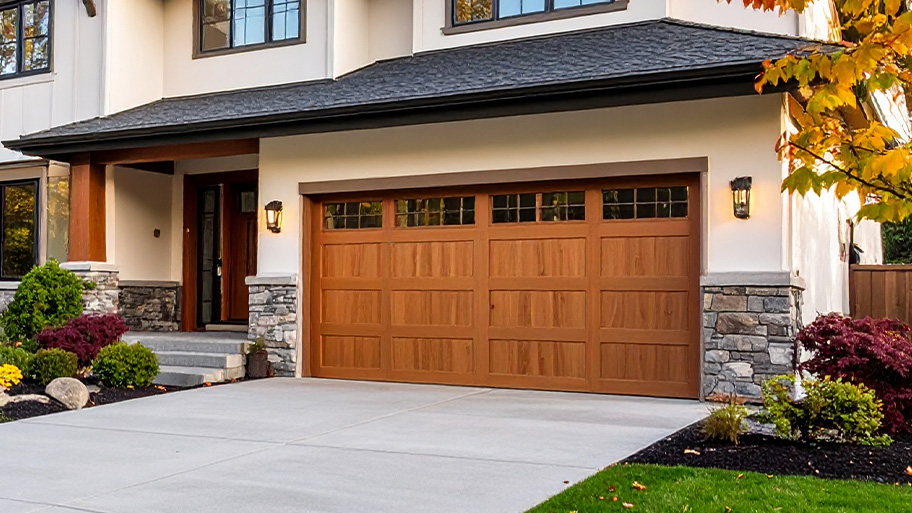
Replacing a garage door is necessary to add security and value to your home. Learn how each door type affects the total cost of this project in Columbus, OH.
Give your garage the power to rewind


Garage doors can have all sorts of wonky problems. You might find your garage door is opening itself or the garage door won't open with the remote. But when your auto-reverse feature isn't working correctly, you really have a problem. Use the following tips to adjust the settings.
The first step is to test your garage door auto-reverse functionality to see if there's a problem.
Here’s an easy tip: Get something solid (like a cinder block or brick) and place it under the garage door. Hit the close button and see if your garage door stops and retracts once it senses the brick. If it doesn’t, stop it manually before the door comes all the way down.
If the door doesn't reverse or seems slow to respond, this can present potential safety hazards and indicate you need to adjust the auto-reverse setting.
Once you've determined there's a problem, check the owner's manual. It provides a breakdown of garage door parts, components, and some detailed troubleshooting instructions specific to the garage door model you have. If you don't know where you placed yours, you can likely order a replacement from the manufacturer or find a copy online.
If you can't find a manual and want to adjust the settings now, you can troubleshoot on your own by checking the garage door motor itself. The exact location of each motor type varies, but check above where the vehicle would be parked, usually in the center of the garage. The motor resembles a plastic box or container and is safe to touch.
Depending on your model, there should be a component that looks like a screw or knob labeled as the auto-reserve sensitivity adjuster. You can use this to adjust the sensitivity by turning the knob counterclockwise (or with a screwdriver if it's a screw).
If your garage door isn’t working properly, it’s possible that the rollers or tracks are damaged. Each door has a set of rollers that live on the side tracks. While the door is closed, examine these rollers and their components, looking for signs of damage or wear. If you notice damage, you can purchase new rollers at a local hardware store and easily replace them without removing your garage door. The rollers, whether new or existing, might also need to be lubricated.

Once you’ve adjusted the sensitivity and examined the components, perform the cinder block test again. Keep adjusting, testing, and re-testing until you achieve a sensitivity you like.
If adjusting the knob and replacing worn rollers doesn't seem to work, this problem may be beyond your capabilities. In this situation, contact a garage door repair specialist near you. They can examine your door to determine what needs to be done and address other problems you might be having, like a noisy garage door.
You can expect to pay an average of $220 to repair a garage door, although the actual cost can range anywhere between $50 and $550.
You may also need to hire a local electrician to fix faulty wiring, which may cost you $50 to $100 per hour. However, it may be worth it for the peace of mind that your family and pets are safe, even when the garage door is in operation.
From average costs to expert advice, get all the answers you need to get your job done.

Replacing a garage door is necessary to add security and value to your home. Learn how each door type affects the total cost of this project in Columbus, OH.

How much does a glass garage door cost? The size, type of glass, and frame material will all impact what you pay.

A side sliding garage door costs a pretty penny, but there are serious advantages vs. tilting garage doors. Learn what affects the cost of this seldom-seen door type.

If you have a leak in your garage, it’s important to know who to call for help. The answer depends on what caused the leak in the first place.

Winterizing your garage door can help you throughout the year, not only in the winter. Using this guide, you’ll learn how adding items such as insulation and even table salt can help prevent your garage door from freezing.

Adjusting your garage door spring can be a dangerous endeavor. If you want to tighten your belt and tackle this expert DIY, here’s your complete guide.